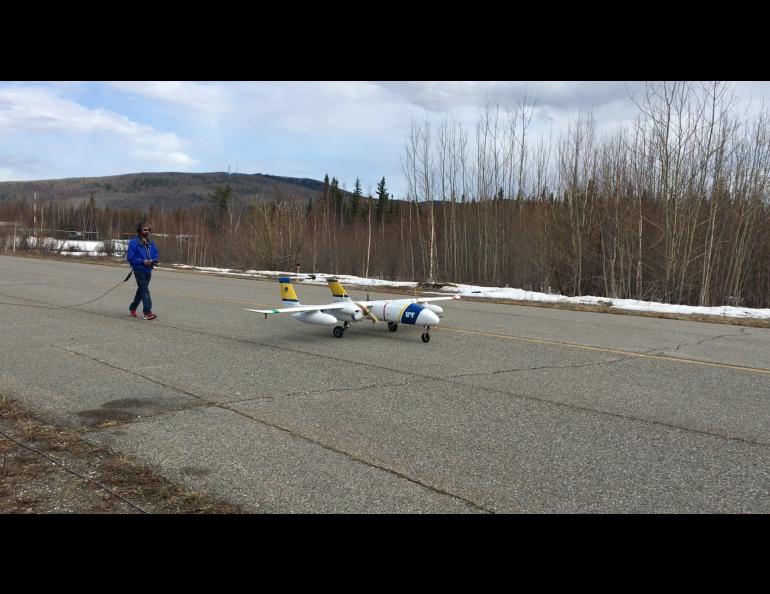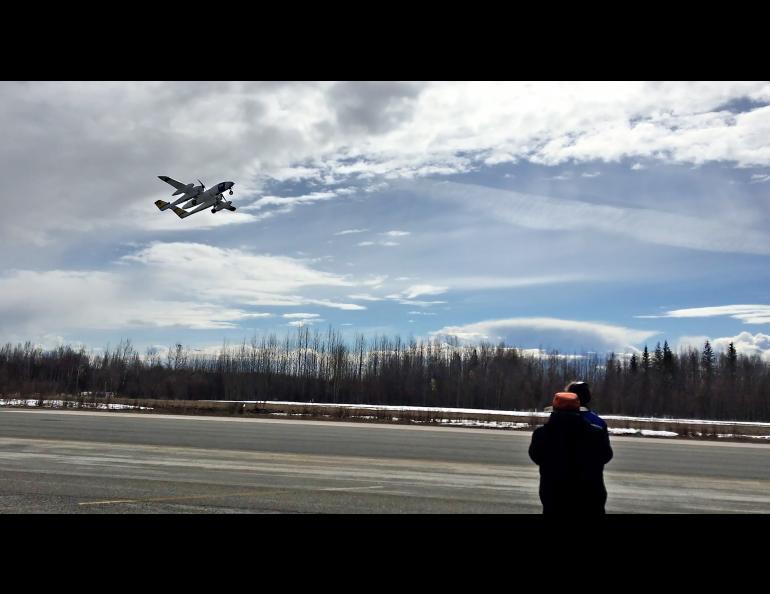Nenana’s airport will be the site of a new 4,800-square-foot hangar for the Alaska Center for Unmanned Aircraft Systems Integration. The hangar will serve as a base for drone cargo test flights between Fairbanks and the small city 54 miles to the southwest.
The University of Alaska Board of Regents approved $3.3 million for the hangar on Feb. 24. ACUASI is a part of the University of Alaska Fairbanks Geophysical Institute.
ACUASI has been using the city-owned Nenana airport regularly for test flights and wants the city to become a part of an Interior drone testing hub. The airport does not have any available hangars.
Construction is expected to begin before June 30 and be complete in early fall. The university will lease land from the city.
“Having a hangar at Nenana will greatly expand our testing ability and increase our efficiency,” ACUASI Deputy Director Nick Adkins said. “We thank the Board of Regents for their speedy approval of the project and the governor and Legislature for providing the funding.”
Federal COVID relief funds will pay for the project. The Alaska Legislature approved Gov. Mike Dunleavy’s request that $10 million of the state’s share of those funds be designated for ACUASI.
The hangar will provide year-round space for drone storage and maintenance and testing of equipment designed to increase communication among all airspace users. The project includes office space.
“We look forward to a long-term relationship with the community of Nenana,” Adkins said. “The city’s airport is easily accessible and is in a good location for testing cargo deliveries to areas outside the community.”
ACUASI is a national leader in unmanned aircraft systems innovation and research and a leader in the integration of unmanned aircraft systems into the national airspace.
UAF is one of seven FAA-designated unmanned aircraft systems test sites established to develop and test drone technology. It has numerous flight test areas around the country.
The Federal Aviation Administration in February granted a regulatory waiver to the UAF unmanned aircraft systems test site.
The FAA decision supports aircraft manufacturers and operators in proving the safety of their drones so they can eventually be certified for flight in the national airspace system. Under terms of the waiver, ACUASI is responsible for assessing the airworthiness of a test site user's unmanned aircraft and its procedures.
ACUASI has a variety of unmanned aircraft, as well as ground control stations, antennae, generators and accessories. It has a hangar at the East Ramp of Fairbanks International Airport.
ACUASI’s largest aircraft include the Sentry and SeaHunter.
The white SeaHunter has two engines, weighs 299 pounds at maximum and has a 16-foot wingspan. It carries enough fuel to fly for 10 hours. The light-gray Sentry has a wingspan of nearly 13 feet, weighs 280 pounds when empty and carries fuel for six hours of flight.
The center also owns unmanned aircraft system payloads, including detect-and-avoid systems (ground-based and airborne), anti-GPS jamming systems, electro-optical/infrared cameras, lidar systems, methane detectors, aerosol samplers and more.



